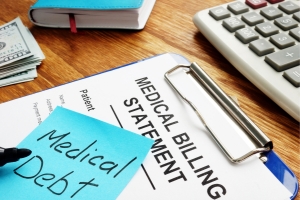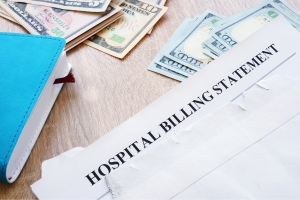Major Changes in Credit Reporting for Medical Debt
The Consumer Financial Protection Bureau (CFPB) is introducing groundbreaking proposals under the Biden administration to mitigate the adverse effects of medical debt on Americans’ credit scores, signaling a significant shift in how medical debt is handled in credit reporting.
The Growing Burden of Medical Debt
As of June 2021, US consumers faced approximately $88 billion in medical debt. With an estimated 41% of Americans grappling with this type of debt, the impact on creditworthiness has become a pressing concern.
Increasing Numbers and the Credit Dilemma
Medical debt encompasses a range of expenses from unexpected medical events to surprise bills and out-of-pocket costs. The wide scope of this debt affirms that it is not a reliable indicator of creditworthiness, necessitating new approaches in credit evaluation.
New Proposals for Credit Relief
The CFPB’s proposals aim to exclude unpaid medical bills from consumers’ credit scores, a move that could provide significant relief for millions. This change reflects a broader understanding that medical debt is often unforeseen and not a choice, differentiating it from other types of debt.
Navigating Disputes Under New Medical Debt Credit Rules
With medical debt credit reporting undergoing major changes, understanding dispute rights is essential. Previously, attempting to remove medical debts from credit reports was extremely difficult, even when inaccurate.
Under the new guidelines from the CFPB, consumers have stronger grounds for disputing medical items. Unpaid medical debts under $500 will no longer appear on credit reports. Many other medical debts will also not be reportable for 12 months.
Credit bureaus must now prove the validity of reported medical debts when challenged. This shifts more burden of proof onto financial institutions during disputes.
Impact of CFPB’s Move on Consumers
The recent actions by the CFPB and credit bureaus to remove certain medical debts from credit reports have already started showing positive impacts, with millions potentially seeing their medical debt in collections erased from their credit files.
New Timelines For Medical Debt
The CFPB proposals also adjust the reporting timelines for medical debts, providing more time before they can impact credit scores.
Medical debts paid by insurance will no longer be reported at all. For others, unpaid medical bills won’t show up on credit reports for one year, up from 6 months previously. This delays the credit score impact, giving consumers more time to resolve bills.
The longer grace periods aim to be more equitable and avoid unduly harming those facing transient financial issues due to medical needs.
What Counts as Medical Debt
Clearly defining medical debt is crucial for credit bureaus to update reporting policies and for informing consumers.
The CFPB outlines medical debt broadly, including hospital, doctor, dental, vision, and ambulance bills. Even bills not explicitly medical like for home equipment or modifications for medical needs qualify.
Catching the wide range of qualifying expenses prevents undue credit damage. It also motivates financial institutions to update their risk assessment policies beyond just medical debt.
The Way Forward in Managing Medical Debt
While these changes are promising, they also raise questions about the future of credit reporting and lending practices. Consumers and financial institutions alike must understand and adapt to these new regulations and their potential implications on credit and lending.
How Creditors Are Impacted
While these changes provide relief for consumers, they also raise challenges for creditors and lenders assessing risk in lending decisions. Removing medical debt history compromises insights into repayment ability. Some institutions may struggle to balance more limited consumer debt data with responsible lending practices.
Many creditors must overhaul internal scoring systems dependent on complete medical debt information. Doing so without increasing lending exposure will test credit issuers, potentially restricting access for some consumers if mitigations fall short. With easier dispute options, creditors also carry a heavier burden disputing every challenged medical tradeline while still documenting their full case records.
Though well-intentioned in providing relief, the changes undoubtedly disrupt standard creditor processes. How deftly institutions rework practices amid these reporting regulation shifts may determine if consumer access truly expands or contracts moving ahead.
Collecting Medical Debt Under New Rules
Less Recourse for Unpaid Medical Bills
The CFPB changes limit creditors’ options pressing consumers for unpaid medical bills. With delayed reporting, no credit leverage exists for a year. Limited collection efforts are permitted in the interim. And the $500 reporting minimum means small-balance medical bills lack credit impact completely.
Adapt Collection Strategies to New Landscape
Collectors must overhaul approaches, as old strategies for medical debts are no longer effective or allowable. Building repayment plans directly with consumers becomes more critical before considering credit reporting. Boosting internal patient financing and assistance programs also helps offset constraints.
Learn New Compliance Nuances and Best Practices
Navigating the new rules requires vigilance from medical collectors around compliance and responsible efforts. Seek expertise in establishing appropriate internal protocols under revised consumer protections against aggressive collection of medical debt.
